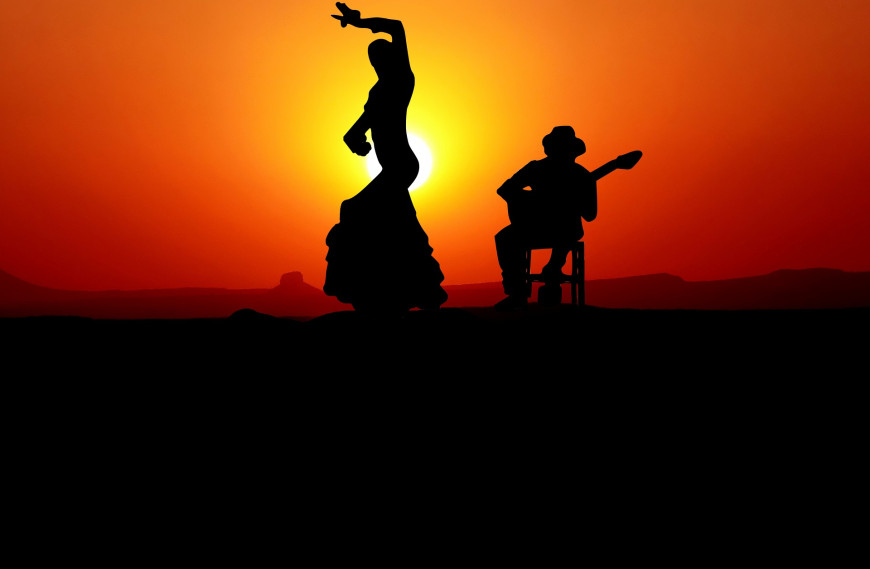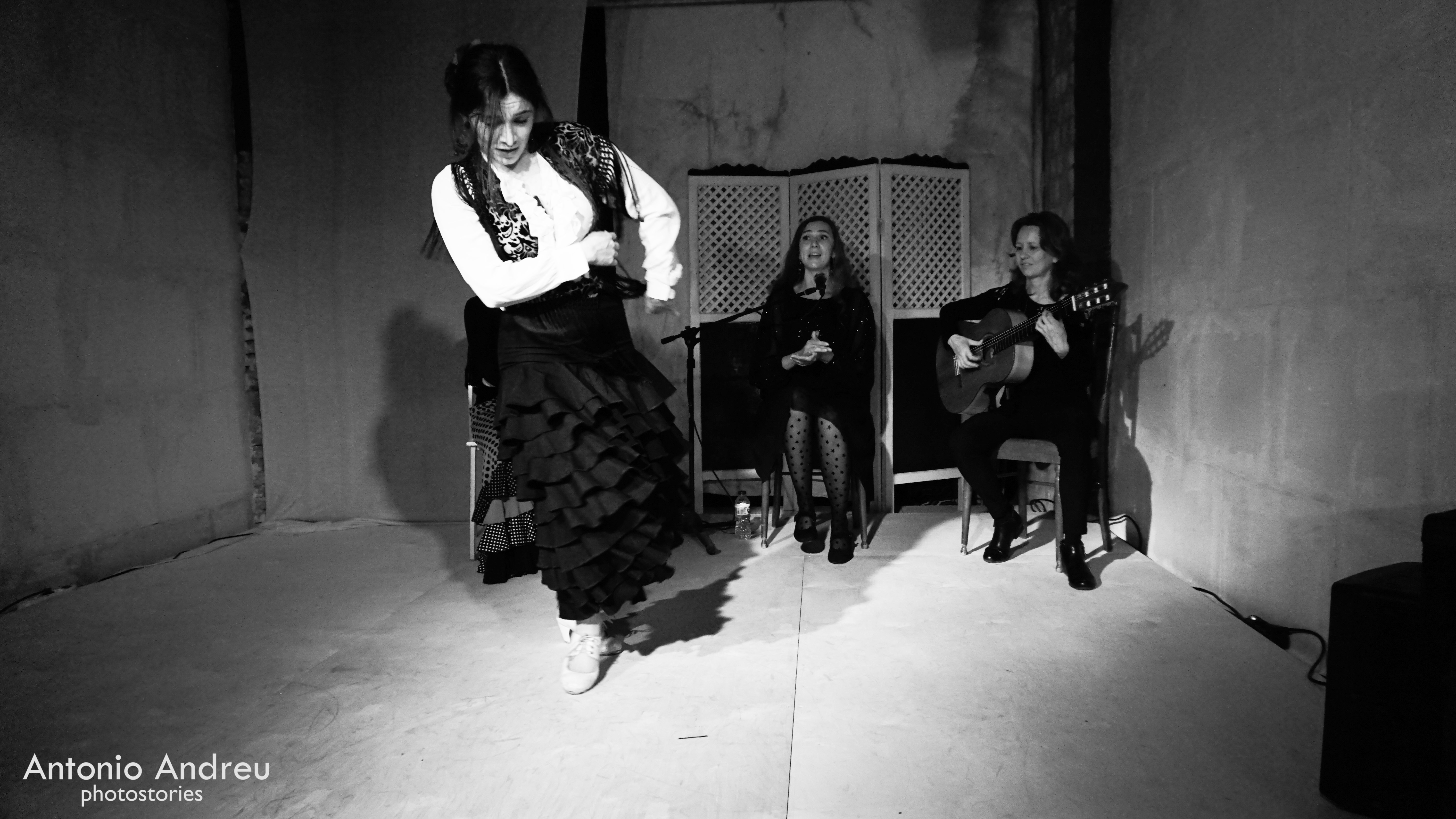What Is (And Isn't) Flamenco: Part One

The past week was an exciting one for flamenco! International Flamenco Day was Saturday, November 16th. Spanish-born pop star Rosalía, whose musical roots and inspirations lie in flamenco, won Album of the Year and two other awards at the Latin Grammys. And, best of all, Lessonface opened enrollment for our introductory Flamenco Guitar Workshop, starting January 2020.
The Flamenco Workshop is a group class designed for guitarists from any genre who are curious about flamenco guitar. If think you’re interested in flamenco, but aren’t quite sure what it is, keep reading. Likewise, if you’re wondering how the music from Rosalía’s El Mal Querer got left out of the flamenco course curriculum, this article will bring you up to speed.
For an audible introduction to what flamenco is check out this introductory (somewhat arbitrary, but authentic) listening list:
Solea - Manolo Franco (guitar)
Bulerias - Paco de Lucia (guitar)
Malagueña - Mayte Martin (voice)
Tangos - Camarón de la Isla (voice)
Alegrias - Miguel Poveda (voice)
If you’re excited by the guitar’s role in these pieces and want to learn more, the Flamenco Guitar Workshop will be perfect for you. If you enjoy the singing, even better. We’ll only cover solo guitar in the course, but the more you explore flamenco singing and dance, the more deeply you’ll understand what you play.
Flamenco is a very specific style of music, and misconceptions are common among newcomers outside of Spain. Understanding how the genre evolved sheds light on what makes flamenco ‘flamenco’, and why we can classify it so definitively.

While the musical roots and cultures that influenced flamenco stretch back many for
centuries to many corners of the world, flamenco as an art form evolved specifically in
southern Spain from in the mid-1800s.
A brief history
Flamenco is a specialized art form that evolved in Andalucia (southern Spain) from a combination of Romani, Moorish, Christian, Jewish, Spanish folklore, and South American musical influences. No single culture can take credit for the origins of flamenco. Rather, it was the mixing of cultures throughout Spain’s diverse history that set the stage for the genre’s development.
While the roots of flamenco extend back much further, the word 'flamenco' first appeared in the mid-1800s to describe the beginnings of the music we know today. The core elements of authentic flamenco are cante (singing), baile (dance), guitar, and palmas (percussive hand-clapping). The music developed in a variety of contexts including private gatherings, music cafes, formal concerts, flamenco clubs, and parties.
Early on, the guitar was used solely to accompany singing and dancing and employed primarily thumb techniques and rasgueos (rhythmic strumming). Later, classical guitar techniques such as arpeggios, tremolo, and melodic finger-picking were incorporated into flamenco. As its repertoire became more intricate and complex, the flamenco guitar evolved into a solo instrument in its own right.
Flamenco performances today
If you come to Spain to see flamenco, you’ll probably go to a typical performance venue called a tablao. In a tablao, performers are scheduled with other artists whom they may know well or may have just met. Experienced performers can execute a brilliant and heartfelt performance with minimal or no rehearsal by improvising within a traditional structure. The singer, dancer, and guitarist communicate their intentions and transitions through music and body language. The singer draws from a repertoire of melodies that belong to the palo (flamenco style). The dancer interprets the singer, listens carefully for individual variations, and interprets the cante with elegant arm movements and percussive footwork. The guitarist accompanies the cante with harmonies and embellishing details and supports the dancer’s footwork with strict compás (rhythm) and rasgueos (strumming).
While the performance as a whole is improvised, artists don’t necessarily invent their material on the spot. Guitarists usually use falsetas (solos) and accompaniment details that they have played before, dancers draw on steps developed over time, and singers have probably sung certain melodies hundreds or thousands of times (though they may change the lyrics). The artists’ personalities and repertoires combine in the moment for an entirely unique and irreplicable performance.

A typical flamenco tablao performance includes singing, dancing, guitar, and percussive hand-clapping. Performances are intense and energetic, and often improvised within a traditional structure.
A typical flamenco show in Seville features a guitar solo, at least two palos with dance, and at least one palo with singing and guitar. Most performances end with a "Fin de Fiesta" of the palo "Bulerias" in a casual, festive atmosphere. Friends of the performers who are in the audience may come to the stage and participate in this final part.
Getting started in flamenco guitar
Most beginners learning flamenco outside of Spain start out playing solo guitar, which is a good way to learn the basics of flamenco technique, rhythm, and palos. Also, flamenco is great for developing right-hand strength and balance. Most styles of guitar use the right hand fingers primarily in a contracting motion (moving the fingers toward the palm of the hand). Flamenco techniques like rasgueos and alzapua extend the fingers away from the palm and develop the opposing muscles. Even guitarists primarily interested in other genres benefit from learning a few key flamenco techniques.
Lessons in flamenco work a little differently than lessons in some genres. For starters, flamenco is traditionally taught by rote. That is, the teacher demonstrates a short passage, and the student(s) copy. Student and teacher repeat passages together during class, and recordings help students remember material during practice. There are a lot of subtleties of flamenco that the ear picks up easily, but that are hard to convey on a page. Therefore, even if you’re skilled at reading music, and even though there are plenty of flamenco transcriptions available in TAB, learning by rote remains the most effective method.
Another way flamenco differs from other genres is we often don’t learn set pieces that have a particular beginning, middle, and end. Rather, we explore and learn material to play within flamenco’s various palos. The listening list at the start of this article, for example, contained five different palos: Solea, Bulerias, Malagueña, Alegrias, and Tangos. If you search those titles on YouTube, you’ll find countless solos with the same name, and none of them will be identical. That’s because the palo dictates details like key, rhythm, tempo, mood, and possible cante melodies, but not specific music that must be played.
Once we understand the compás (rhythm) of a palo and know a few falsetas (short solos), we can arrange our own solo, which is one objective of the Flamenco Guitar Workshop. In the workshop, we’ll explore various ways to play compás within the palo Solea. We’ll also learn several falsetas that span the fundamental flamenco techniques: arpeggios, thumb technique, tremolo, rasgueos, picado, and alzapua. Students interested in specific concepts are more than welcome to drop in on the individual classes that pertain to their interests, as are students who want to use flamenco sounds to inspire their own playing style and song-writing. Students who sign up for the entire workshop will finish with more than enough falsetas and compás variations to arrange into their own unique solo piece.
Read What Is (And Isn't Flamenco): Part Two here.
Some flamenco concepts mentioned in this article have been addressed in more detail in Lessonface’s Forum. Check out the links below and feel free to share your thoughts and questions in the appropriate forum thread or in comments below.
What is a flamenco palo?
How rasgueos and other flamenco techniques can serve all guitarists
Flamenco guitar recommended listening
How to arrange flamenco guitar solos
Leah Kruszewski has been a guitar teacher for nearly ten years, specializing in acoustic, classical, flamenco, and fingerstyle guitar. She is the most popular teacher on Lessonface for classical and flamenco guitar! This Winter 2020, Leah is offering a group class entitled "Flamenco Guitar Workshop." This class will meet for seven live sessions on Sundays, Jan. 19th, 26th, Feb. 2nd, 9th, 16th, 23rd, March 1st, from 12pm-1pm US Eastern Time. Learn more and sign up here.
Find more Guitar Classes and Tutorials




